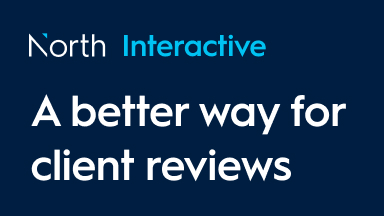We’re notifying clients and advisers that we’re making some important improvements to our Death Benefit nomination and payment processes, to make it easier to make a death benefit nomination and allow for quicker payment of claims where there isn’t a valid nomination. The changes will also provide further certainty around claims.
To help you manage the changes, please share this key information with your advice and back-office teams.
This article covers the following important topics, and will take approximately 6-7 minutes to read:
- Introduction
- What’s changing?
- What do I need to do?
- Nomination types and terminology updates
- Estate planning
- Changes to capacity to transact
- Payment of claims where there is no nomination
- Tax implications
- The claims process
- Dependants (superannuation law vs tax law)
Introduction
It’s important to understand the death benefit nomination and claims processes so that your clients have certainty around how their death benefit will be paid. Critical to this, is making sure they are prepared, and have a valid and current death benefit nomination in place.
What’s changing?
Effective 1 July 2024:
- When submitting a Non-lapsing nomination, clients will no longer be required to have their nomination signed and dated in the presence of witnesses.
- Where a member passes away with no valid nomination, we’ll pay the death benefit to the member’s estate.
- We’ve also made some minor updates to terminology to make the death benefit nominations easier to understand.
What do I need to do?
- Speak to your clients about estate planning and check in with them at your reviews to confirm their nominations are valid and up to date.
- Ensure that your clients are aware of any relevant changes and how it will impact them (especially where they don’t have a valid death benefit nomination).
- Understand the steps involved in the claims process, documents required, criteria for determining for beneficiaries, and the possible delays or disputes that may arise.
- Understand any potential tax implications of paying a death benefit to the estate.
Nomination types and terminology updates
We’ve refreshed the terminology to align with the PDS and the Trust Deed, and to make it easier to understanding the different types of nominations and make it easier to differentiate between binding and non-lapsing nominations. We will initially update the PDS and forms with the new terminology, and more gradually reflect this in other material and online throughout the year.
The definitions have not been changed, and the changes are shown below:
| Current terminology | Current terminology |
| Non-binding death benefit nomination | Non-binding nomination |
| Binding death benefit nomination | Binding nomination |
| Non-lapsing binding death benefit nomination | Non-lapsing nomination |
If you make a non-lapsing nomination, you’ll no longer be required to have your nomination signed and dated in the presence of witnesses. Binding nominations will still require witnessing, as it is required under superannuation law.
There are several types of nominations available to members (using the updated terminology):
- A non-binding nomination – the Trustee will consider the nomination provided by the member but has discretion to pay the benefit to one or more dependants and/or the member’s legal personal representative in proportions it determines.
- A binding nomination – the Trustee is bound to pay the benefit to the person(s) the member has nominated as long as their nomination is valid. This nomination expires after 3 years.
- A non-lapsing nomination – the Trustee is bound to pay the benefit to the person(s) the member has nominated as long as their nomination is valid. Unless an amendment or revocation is made, a non-lapsing nomination will not expire.
- A reversionary pensioner – a member can request that their pension continues after their death by nominating their spouse or their child as a reversionary pensioner.
Estate planning
One of the most important things you can do before someone passes away is to speak to your client about their estate planning.
- It’s important to note that Superannuation does not form part of an estate unless a decision is made to pay the death benefit payment to the estate or there is a valid binding or non-lapsing nomination to pay to the late member’s Legal Personal Representative (LPR).
- We recommend clients speak to a professional estate planning service if required or work with their adviser to stress test the estate planning strategies, while they are fit and healthy. Always ensure your advice meets the needs of your client and their beneficiaries.
Changes to capacity to transact
Upon the notification of the death of a person, any authority such as a Power of Attorney or authority to transact ceases.
Once a date of death has been provided, any transaction authority on behalf of the deceased member will cease, and Advisers and their staff are no longer able to transact on the client’s behalf.
If required, a LPR can provide an instruction to transact. This is either:
- An Executor named in the late member’s Will, who can be granted Probate; or
- The Administrator of the late member’s estate, who has been granted Letters of Administration.
Assets remain invested unless otherwise instructed, and any new income received into the account will stay invested in cash.
Payment of claims where there is no nomination
The Trust Deed amendments are effective on 1 July 2024; where a member passes away on or after 1 July 2024, and there is no nomination, the default approach to paying claims will change.
The below table provides further clarity around new and existing Death Benefit claims, where there is no nomination for any of the following reasons:
- Their nomination is deemed invalid;
- There was no nomination made; or
- They cancelled their existing nomination without making a new nomination.
| Date of death Pre-1 July 2024 | Date of death 1 July 2024 Onwards |
The benefit will be paid at the discretion of the Trustee to one or more dependants and/or the legal personal representative in proportions that the Trustee determines. If there are no dependants or legal personal representative the Trustee may pay the benefit to another person or persons. |
The benefit will be paid to the estate. If there are no dependants or legal personal representative the Trustee must pay the benefit to another person or persons |
A death benefit nomination must still be valid at the date of death, and we check this at the time of any claim being made.
Note: inflight claims cannot have the post 1 July process applied, as the Trust Deed amendments only apply where the date of death is on or after the effective date.
Tax Implications
The changes to our claims process will result in more claims being paid to members’ estates; therefore it’s important to be aware of any tax implications, and to ensure your clients have a valid nomination in place.
A lump sum benefit paid to a dependant for tax purposes is generally tax free. However, if the benefit is paid to a non-dependant for tax purposes, the benefit is taxed. It’s important to obtain advice or work with your client or their beneficiaries before making any decisions about the payment.
Where payment of the account is made directly to the Estate rather than directly to a dependent or non-dependent beneficiary, it becomes the responsibility of the LPR to pay tax on the benefit when it is paid to a non-dependent from the estate.
The claims process
One of the challenges of dealing with super death claims is that they can be emotionally and legally complex, and there may be multiple parties involved. Therefore, it’s important to manage client and beneficiary expectations about the timeframe and the outcome of the claim.
Understanding the claims process and what happens when someone passes away can help make the process easier on their loved ones.
- When we are notified of a member’s passing, we will send out forms to help initiate a claim, which needs to be returned to us, along with other supporting documentation.
- We then review the initial claim paperwork and determine the next steps. The time taken will depend on the level of complexity.
- If all the information is not provided, the claim cannot progress. It typically takes 2-3 months to fully assess a claim.
- For complex cases involving multiple potential beneficiaries (or unknown location or whereabouts), it may take longer.
- Once a decision is made, potential beneficiaries need to accept the decision before the claim can be paid.
- If the claim is in dispute, the benefit will not be paid until a response to the complaint has been provided. The easiest way to speed up your claim is to provide all requested documents together at the same time.
Dependants (superannuation law vs tax law)
Superannuation law (the SIS Act) states that a super death benefit can only be paid to the late member’s LPR and/or one or more of their dependants. It’s important to understand the definitions of a dependant for superannuation law (who can be paid) is different to the definition under Tax law.
The tax law definition will impact the tax you pay. If an LPR or dependant cannot be found after making reasonable enquiries, the benefit may be paid to another person or follow an unclaimed monies process.
Reminder: make time at your client reviews to check that their death benefit nominations (LPR and/or beneficiaries) remain valid, and that you have contact details for these individuals. Preferably, you would have already held beneficiaries’ meetings with them, and they know to reach out to you at any time.
More information
To read more about the notification going to clients, read the North News article.
We’ll provide more updates around the Death Benefit changes, including more about what causes a nomination to become invalid. Please look out for these articles in North News over the coming months.
If you have any questions, speak to your Business Development Manager.

North manual Data Feed has been upgraded
03 May 2024 North provides you with the option to manually download data files for use with your financial planning software tool or CRM. We are upgrading this file to the latest standard from v4.0 to v4.3. Read more
Significant Event Notice to clients - May
23 April 2024 We’re writing to all North clients between 6-31 May 2024 via a Significant Event Notice (SEN) to let them know we’re making updates to some Terms and Conditions, related to their account. Read more
Four ways North’s new interactive client reporting can transform your reviews
22 April 2024 Alongside one of the strongest platform integrated ROA capabilities, and innovative features like North’s risk profiles, we’ve now introduced an all-new interactive client review tool. And it’s making a real difference for advisers. Read moreWhat you need to know
The information on this page has been provided by NMMT Limited ABN 42 058 835 573, AFSL 234653 (NMMT) and is general in nature. It is for professional adviser use only and must not be distributed or made available to retail clients. A person should consider whether this information is appropriate for them before making any decisions. It’s important a person considers their circumstances and reads the relevant product disclosure statement and/or investor directed portfolio services guide and target market determination, available from northonline.com.au or by contacting the North Service Centre on 1800 667 841, before deciding what’s right for them.
You can read NMMT's Financial Services Guide online for more information, including the fees and benefits that companies related to NMMT, N.M. Superannuation Pty Limited ABN 31 008 428 322, AFSL 234654 (N.M. Super) and their representatives may receive in relation to products and services provided. You can also ask us for a hard copy. Past performance is no guarantee of future performance. MyNorth Super and Pension, North Personal Super and Personal Pension are issued by NM Super as trustee for the Wealth Personal Superannuation and Pension Fund ABN 92 381 911 598. MyNorth Investment is operated by NMMT. MyNorth Investment Guarantee is issued by National Mutual Funds Management Limited ABN 32 006 787 720, AFSL No. 234652.
MyNorth and North are trademarks registered to NMMT.